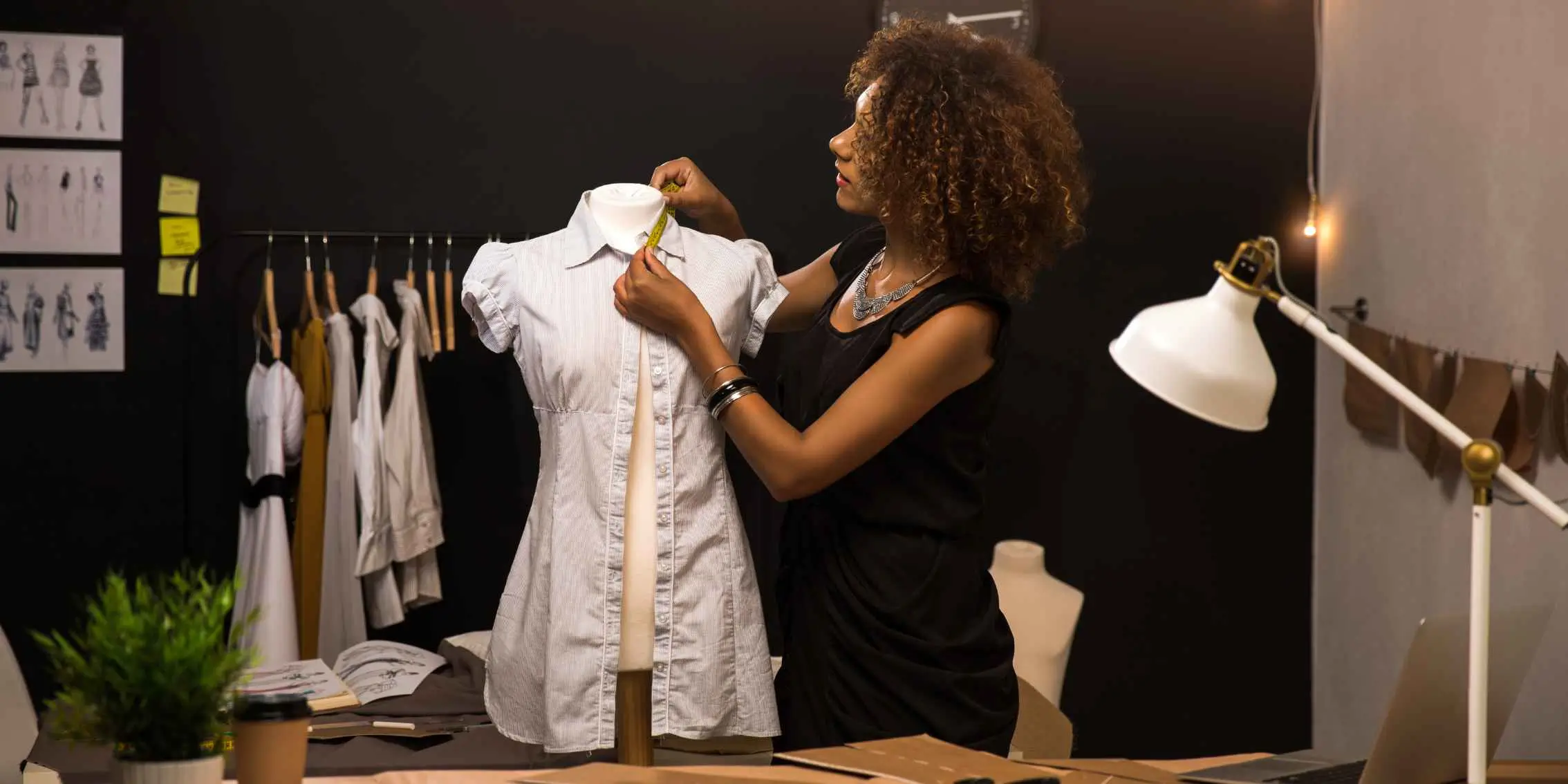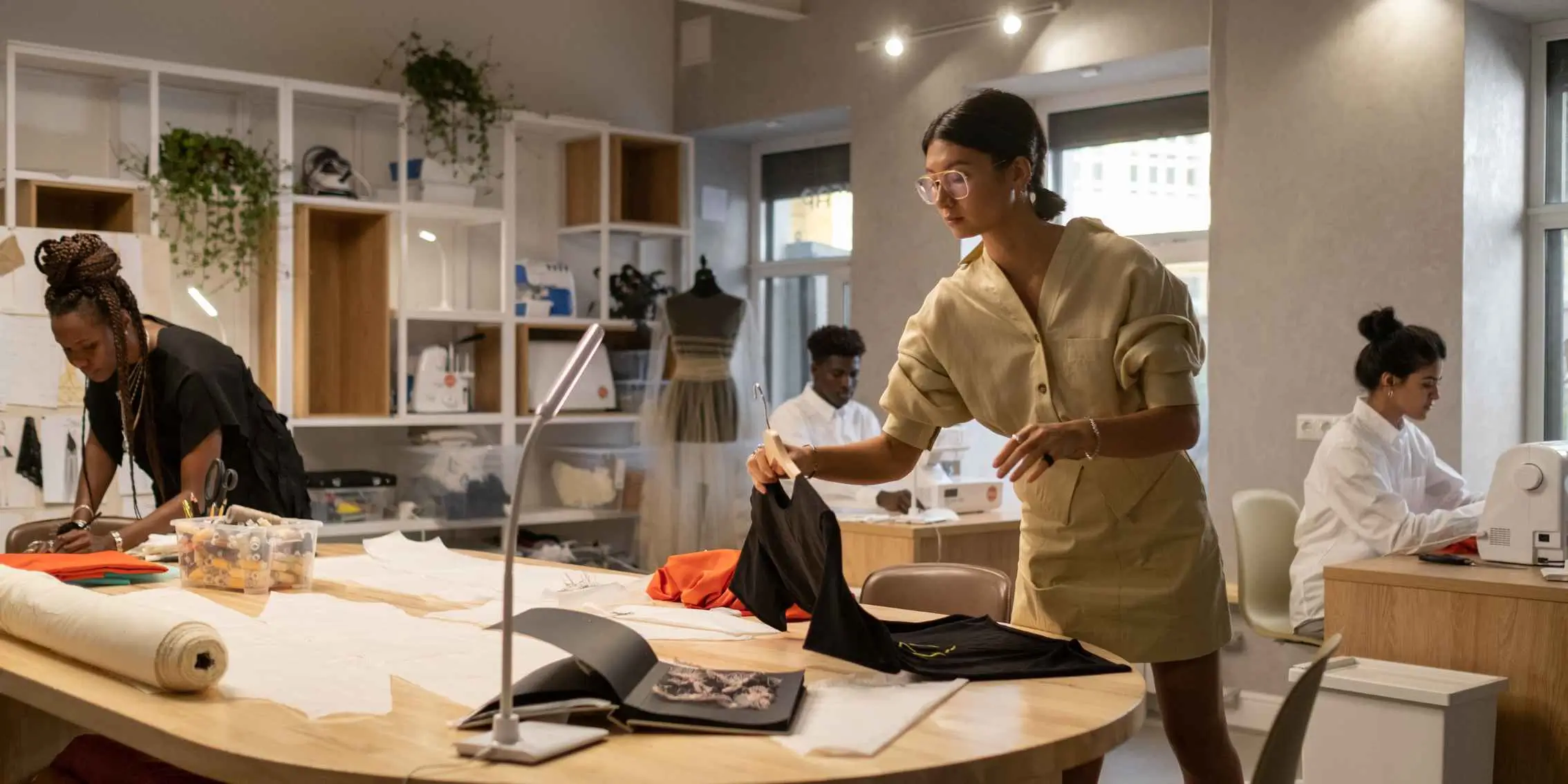 Image source: Canva
Image source: Canva
The fashion industry is a global powerhouse—worth billions and influencing everything from high-end runways to everyday wardrobes. Yet, for many aspiring designers, the inner workings of the industry remain a mystery: Who are the key players in the fashion industry? What does the fashion industry structure look like from design to retail? And why does such knowledge matter for someone with creative ambitions?
In this article, we’ll pull back the curtain. You’ll learn about the primary segments that shape fashion, the major roles within each segment, and why industry insights are invaluable for emerging professionals. We’ll also introduceModule 3 of The Online Fashion Design Institute’s online course—a resource that blends creative skill with real-world business know-how. Whether you plan to launch your own label, design for top brands, or team up with major retailers, these insights can guide you towards a successful career.
Fashion isn’t solely about aesthetics; it intersects with identity, economics, and global culture. Beyond runway glamour, the industry relies on countless specialists—textile researchers, manufacturers, buyers, retailers, influencers, media professionals, and more. Understanding this world equips you to make strategic decisions about collaborations, career moves, and market positioning.
At The Online Fashion Design Institute, we believe that a great designer is more than just a creative visionary. True success often comes from fusing design talent with deep knowledge of how the industry operates. Module 3 of our online fashion design course focuses on exactly that: bridging creative brilliance with professional acumen, teaching you to navigate everything from supply chain logistics to brand positioning. If you’re looking for a competitive edge in this fast-paced world, having a solid grasp of how each segment links together is the first step.
 Image source: Freepik
Image source: Freepik
Before diving into key roles, let’s map out the fashion industry structure. Picture it as a series of interconnected segments. After all, even the most inventive designs need robust manufacturing, effective distribution, and strong retail channels to succeed.
From fast-fashion retailers to luxury powerhouses, fashion stretches across continents and markets. A Melbourne-based designer might source high-end fabrics from Italy, produce garments in Vietnam, then ship them worldwide via e-commerce. Despite this complexity, the industry often falls into five main areas:
Imagine a designer creating a new T-shirt:
With the fashion industry structure outlined, let’s examine the key players who drive each stage. Success depends on collaboration among all these roles—even a single garment may involve multiple teams and countries.
 Image source: Canva
Image source: Canva
No designer thrives alone. Building rapport with buyers or forging ethical manufacturing relationships can broaden a brand’s reach. Knowing how the fashion industry works points you to the right specialists—pattern-makers, marketing experts, or influencers.
Fashion moves quickly; staying informed about shifting preferences and fresh innovations helps you create relevant pieces. Spotting market gaps—like size inclusivity or eco-friendly materials—can also set you apart in a crowded field.
Even the most breathtaking designs can struggle if production costs are too high or if timing is off. Successful designers balance creativity with strategy—ensuring designs are cost-effective, market-ready, and launched at the right moment. Consider the real-world success stories: many big-name designers who’ve built enduring brands (e.g., Stella McCartney, Tom Ford) are as savvy about economics and branding as they are about style.
Career Paths & Professional Growth
Roles in the fashion industry go beyond just “designer.” You might start as an intern at a design studio, move into a technical role at a manufacturer, then pivot to buying or merchandising. By grasping how each piece of the industry puzzle fits, you’ll spot varied fashion design career paths and discover roles you might not have known even existed.
If you’re eager for more in-depth knowledge—like how to network effectively, build professional relationships, or handle the legal aspects of production—Module 3 of The Online Fashion Design Institute’s online fashion design course is your next stop. This specialised module covers:
For a deeper understanding of core design principles, be sure to explore our guide on Essential Elements of Fashion Design. Combining strong creative fundamentals with industry knowledge will set you apart as a versatile, well-rounded professional. Plus, stay tuned for upcoming articles that delve into specific fashion industry roles and emerging market trends—helping you refine your expertise and discover where your skills can make the biggest impact.
 Image source: Freepik
Image source: Freepik
The fashion industry thrives on collaboration, innovation, and a network of key players—from designers and manufacturers to buyers, retailers, and media professionals. Understanding its structure isn’t just helpful—it’s essential. A designer who truly understands how the fashion industry works can negotiate effectively, spot untapped opportunities, and forge strategic alliances that benefit both creativity and business.
Industry knowledge is your competitive advantage. Whether your goal is launching a high-fashion label, spearheading a retail concept, or shaping trends through media and marketing, a deep understanding of the industry will set you apart. At The Online Fashion Design Institute, our online course is designed to give you that advantage—merging technical expertise with the business savviness you need to navigate this ever-evolving industry
Your journey in fashion starts here. Gain the industry knowledge, creative confidence, and business skills to thrive. Enrol today and take the first step towards your dream career in fashion.